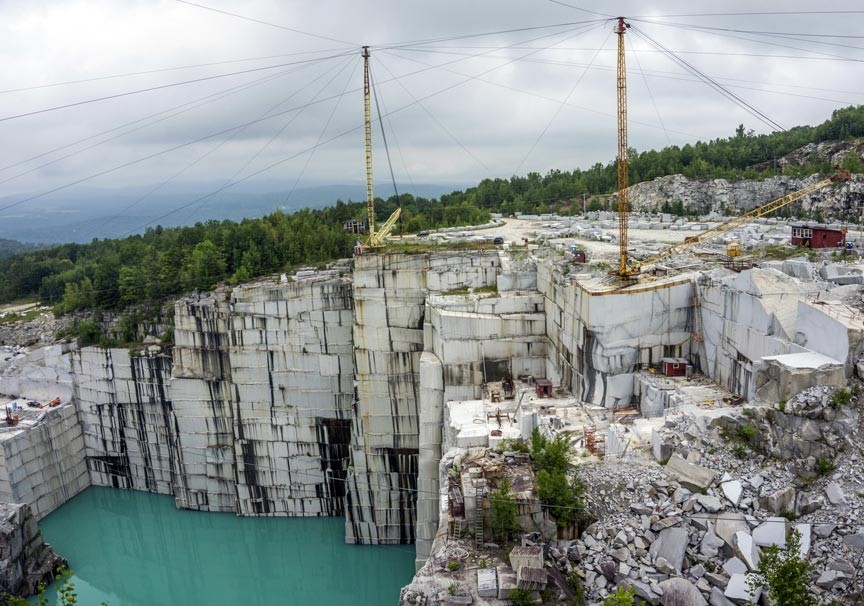Exploring Granite Quarries in South Africa: A Comprehensive Guide
Exploring Granite Quarries in South Africa: A Comprehensive Guide
Blog Article
Revealing the Mysteries of Granite Quarrying: Where Toughness and Sophistication Meet
The globe of granite quarrying is a realm where the raw toughness of nature merges with human creativity to produce structures that stand the examination of time with an air of sophistication. From the midsts of quarries to the careful polishing in workshops, the process of transforming granite into architectural marvels is a complicated dance of custom and advancement. As we peer right into the midsts of this ancient craft, we begin to uncover the covert intricacies that shape the very essence of our constructed setting.
The Origins of Granite Quarrying
In the annals of architectural history, the beginnings of granite quarrying are shrouded in a tapestry of old workmanship and geological marvels. Going back to ancient Egypt and Mesopotamia, the extraction of granite from quarries noted the beginning of a journey that would ultimately result in the creation of some of the world's most iconic frameworks.
Granite quarrying's roots can be mapped to the proficient craftsmens that acknowledged the rock's longevity and visual appeal. Via a combination of primitive tools and large resolution, these very early quarry workers unearthed granite blocks that would certainly end up being the structure blocks of worlds.
As people progressed, so did the strategies of quarrying granite. The Romans, renowned for their engineering prowess, created advanced methods for drawing out granite to create monuments, temples, and roadways that stood the examination of time.
The legacy of these old quarrying methods proceeds to shape contemporary design, with granite staying a symbol of strength and beauty in building and construction tasks around the globe. (granite quarries in south africa)
Devices of the Quarrying Trade
The advancement of granite quarrying methods from old people to modern times highlights the crucial role played by the tools of the quarrying profession in forming the sector's techniques. In ancient times, quarrying devices were rudimentary, often including blades, hammers, and wedges made from materials like bronze or iron. These tools required substantial manpower and time to remove granite blocks from quarries.

In addition, the intro of pneumatically-driven devices and high-powered machinery has considerably reduced the physical labor required in quarrying procedures, enhancing worker security and efficiency. As the quarrying industry remains to introduce, the tools of the trade remain at the center of driving progress and forming the future of granite extraction.
Drawing Out Blocks of Granite
Using precision equipment and progressed methods, the removal of granite blocks from quarries has become a sophisticated procedure in the modern quarrying market. The preliminary step includes determining the place and dimension of the granite deposit to establish one of the most efficient extraction approach. When a suitable site is chosen, the extraction procedure starts with the boring of holes for the placement of explosives. Managed blasting techniques are after that utilized to break apart the granite right into workable areas.

Polishing and Ending Up Techniques
To attain a perfect surface area on granite blocks, competent craftsmens employ a series of meticulous sprucing up and completing techniques. After the initial removal and forming processes, the granite blocks undertake a complete sprucing up stage to enhance their all-natural appeal and sturdiness. One usual technique utilized in brightening granite is ruby abrasion, where commercial rubies are used to grind and polish the stone to a smooth finish. This process not only creates a shiny surface however likewise makes sure harmony in shade and structure throughout the granite block.
Along with sprucing up, finishing techniques are put on more fine-tune the granite's look. These techniques might consist of flaming, refining, or brushing, each offering special appearances and surfaces to suit various visual preferences. Flaming, for circumstances, involves subjecting the granite surface to heats to develop a rough, textured coating, ideal for exterior applications where slip-resistance is necessary. Honing, on the other hand, provides a matte surface that is smooth to the touch, best for indoor counter tops and flooring. More Info By thoroughly picking and using these polishing and completing methods, artisans can change raw granite blocks into elegant pieces that showcase both toughness and beauty.

Ecological Influence and Sustainability
With the expanding focus on environmental consciousness in the market, granite quarrying techniques are increasingly inspected for their effect on natural deposits and long-term sustainability. Quarrying for granite can have significant ecological implications. The extraction process typically includes making use of heavy machinery, dynamites, and big amounts of water, resulting in environment damage, dirt disintegration, and water pollution. In addition, the transport of granite from quarries to refining facilities generates carbon exhausts, even more contributing to ecological deterioration. granite quarries in south africa.
To minimize these effects and make certain sustainability in granite quarrying, industry stakeholders are embracing numerous actions. Executing innovative innovations to minimize power consumption and water use, recovering quarried land for ecological reconstruction, and promoting accountable sourcing techniques are some strategies being utilized. Accreditations such as the Forest Stewardship Council (FSC) and the Leadership in Energy and Environmental Style (LEED) assistance consumers determine ecologically friendly granite products.
Final Thought
In final thought, granite quarrying is a process that calls for specialized tools and techniques to essence blocks of granite and brighten them to a high degree of surface. While the ecological impact of quarrying can be considerable, initiatives are being made to boost sustainability methods in the sector. On the whole, granite quarrying is a delicate balance in between utilizing the stamina and beauty of this all-natural stone while decreasing its effect on the atmosphere.
Report this page